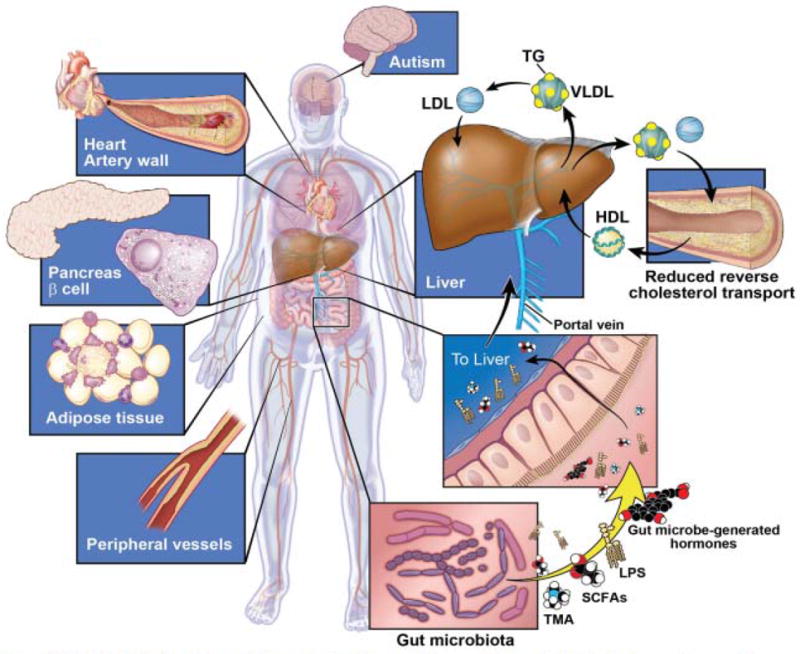Figure. Schematic illustration of some of the many phenotypes and diseases where gut micorbe involvement is reported.

Multiple lines of evidence support a role for altered gut microbial composition or function as a contributor to the development of obesity and related metabolic abnormalities (ie, type 2 diabetes), peripheral and coronary artery disease, and even neurobehavioral conditions, such as autism. Recent observations of significant associations between proportions of specific intestinal bacteria taxa with high-density lipoprotein (HDL) cholesterol and triglyceride (TG) levels in subjects independent of body mass index suggest a role for gut microbes in modifying host lipid metabolism. Gut microbe effects may be mediated through multiple mechanisms, including elaboration of lipopolysaccharide (LPS) or other bioactive metabolites that act fundamentally as hormones, since they can circulate within the host and act at distant sites. Gut microbial production of short chain fatty acids (SCFAs) and secondary bile acids are two such examples. Evidence shows that gut bacteria also generate intermediate precursors (eg, trimethylamine [TMA]) form certain dietary nutrients that can then be further metabolized by the host to generate biologically active products (eg, trimethylamine N-oxide), which then can exert direct effects on lipid metabolism and contribute to disease development or progression. Biological mechanisms impacted by gut microbial metabolites can involve reverse cholesterol transport, hepatic cholesterol and sterol metabolism, intestinal lipid transport, bile acid composition and pool size, glucose and insulin metabolism, energy havest/expenditure, as well as others. LDL indicates low-density lipoprotein; and VLDL, very low-density lipoprotein.
